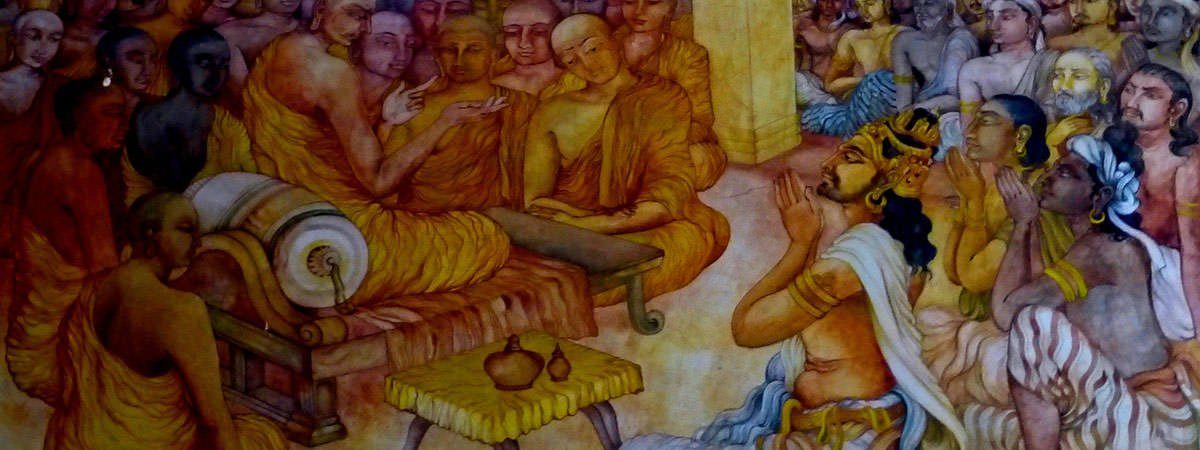Chakravartin (universal ruler) Ashoka, more popularly known now as Ashoka the Great, was a prominent Emperor of Bharatvarsha (present day Indian Subcontinent) in 3rd century BCE. It is estimated that he was born in 304 BCE. Ashoka was the descendant of Chandragupta Maurya; another prominent Indian monarch who had vanquished the Nanda Dynasty and established the Maurya Dynasty with the help of his guru Chanakya. Ashoka inherited vast territory from his father Bindusara, expanded his kingdom and ruled almost the entire Indian subcontinent from 268 BCE to 232 BCE. His reign over the vast empire would largely bring peace, harmony, and prosperity to the land, making him one of the most esteemed monarchs in noted history. Ashoka’s rule also saw the flourishing of art and architecture in his kingdom which saw the construction of numerous infrastructures and fabulous works, some of which stand to date. He is also known to have adopted several welfare measures for the public and is the first monarch known to have advocated conservation measures for wildlife. In the present context, Ashoka is mostly remembered for his transformation into a peaceful king and his active role in the spread of Buddhism across Ancient Asia. The founding fathers of the Modern Republic of India, more than 2 millennium later, would seek inspiration from his rule and adapt the Lion Capital of Ashoka as the National Emblem of the state. Here are the 10 most important accomplishments of Ashoka the Great.
#1 HE EXCELLED IN HIS RESPONSIBILITIES FROM AN EARLY AGE
According to the Ashokavandana (narrative of Ashoka), the second Mauryan Emperor Bindusara disliked his ugly looking son Ashoka. While in his 20s, Ashoka was dispatched to the prominent city of Takshashila (presently located in Pakistan) by Bindusara to suppress a rebellion in the region. The city was approximately 1500 km from the Mauriyan capital of Patliputra (present day Patna in India), and Bindusara possibly wanted Ashoka to fail in this endeavor. However the young prince was quick to march on his fathers orders, took control of the situation and successfully excelled in his responsibility. The mention of the rebellion is however absent from preserved Sri Lankan texts like the Mahavamsa. According to them, Bindusara appointed Asoka as the Viceroy of the Ujjain Province; an important administrative and commercial center in Central India, during that era. Ashoka excelled in this role and gave signs of being a capable administrator. Considering either or both of these sources, it may be noted that Ashoka was given important responsibilities in his early years, despite him being out of favor with his father.
Main Sources:-
Ashokavandana: an Indian Sanskrit language text and part of the avandana literature which comprises of an anthology of Buddhist legends and narratives. Possibly written by Buddhist monks in and around the Mathura region (presently in Uttar Pradesh, India). Some versions date as early as 2nd Century CE, with oral origins estimated to go back to 2nd Century BCE.
Mahavamsa: an ancient epic poem written in the Pali language and dated to 5th Century CE. Relates the history of the Island of Lanka from its legendary beginnings up till the reign of King Mahasena of Anuradhapur (5th Century CE).
Strong, John S. (1989). “The Legend of King Aśoka: A Study and Translation of the Aśokāvadāna.” p 208. Motilal Banarsidass.
Lahiri, Nayanjot (2015). “Ashoka in Ancient India”. p 89-90. Harvard University Press.
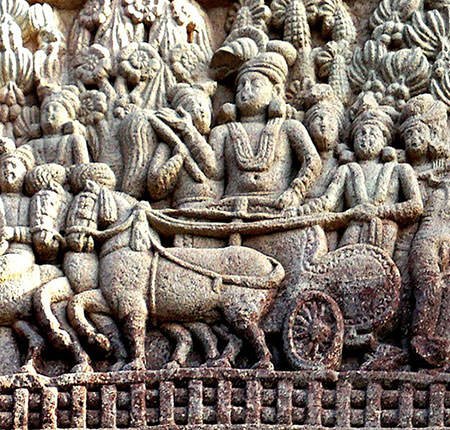
#2 THE MAURYA EMPIRE REACHED ITS GREATEST TERRITORIAL EXTENT UNDER ASHOKA
Evidence suggests that Ashoka was not the crown prince of the Mauryan empire. After the death of Bindusara, political struggles continued for some years, and Ashoka emerged to be officially crowned as emperor around 269 BCE. Ashokavandana recognizes Bindusara’s eldest son Sushima as the crown prince, and Ashoka as the usurper who, along with his supporters, eliminated Sushima and any other threats to his becoming the emperor. Mahavamsa suggests that Ashoka returned from Ujjain to Patliputra to claim the throne and eliminated his eldest brother in the event. It further states that Ashoka killed 99 of his half-brothers during his struggle for the ascension of the throne. Sri Lankan text Dipavamsa (“Chronicle of the Island”) puts the number at 100 while 16th century Tibetan monk Taranath puts it at 6. Historians agree that numbers like 99 and 100 may be exaggerations to contrast Ashoka’s future transformation as a Buddhist, or simply a way of stating that Ashoka killed several of his brothers. Ashoka was officially crowned as the King at the age of 35 years. As a monarch he was ambitious and brutally aggressive in his early reign. He expanded the Maurya Empire further to reign over a realm stretching from present-day Afghanistan in the west to Bangladesh in the east. It covered the entire Indian subcontinent except for parts of present-day Tamil Nadu, Karnataka and Kerala. The empire’s capital was Pataliputra (in Magadha, present-day Patna), with provincial capitals at Taxila and Ujjain. The Maurya Empire reached its greatest territorial extent during the reign of Ashoka.
Main Sources:-
Lahiri, Nayanjot (2015). “Ashoka in Ancient India”. p 101-102. Harvard University Press.
Guruge, Ananda W. P. (1993). “Aśoka, the Righteous: A Definitive Biography”. p 28. Central Cultural Fund.
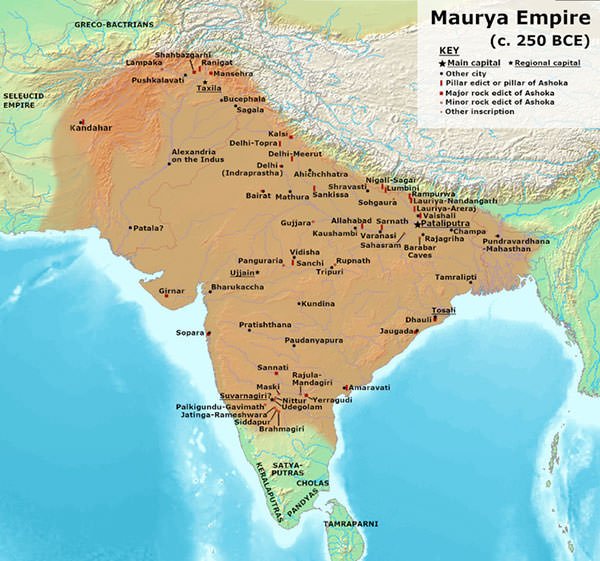
#3 HE OVERSAW 40 YEARS OF PEACE AND PROSPERITY
There is agreement in both North Indian and Sri Lankan Buddhist traditions that Ashoka was a violent person in his early years as a prince and a king. The Ashokavadana refers to him as “Chandashoka” (Ashoka the fierce), and describes several of his cruel acts during his early reign.
Kalinga, located on the east coast of the Indian subcontinent, in the present-day state of Odisha and northern parts of Andhra Pradesh, was a prosperous region consisting of important ports and a powerful navy. In around 262 BCE and in the 8th year of his rule, Ashoka set his eyes on the kingdom. A large Mauryan Army marched to Kalinga and following a fierce battle, Ashoka was finally victorious. The bloody campaign however killed an estimated 100,000 soldiers and civilians, including over 10,000 of Ashoka’s own tribe. A further 150,000 were taken as prisoners while numerous others were adversely affected by hunger, destruction and the fallout of war. In popular perception Ashoka began feeling remorse and was deeply moved by the massacre in this war. This caused him to convert to Buddhism.
According to the Ashoka’s Major Edict 13, the repentance of this massacre caused Ashoka to devote himself to the practice and propagation of dharma. Ashoka proclaims that he now considered the slaughter, death and deportation caused during the conquest of a country painful and deplorable; and that he considered the suffering caused to the religious people and householders even more deplorable. However, it is also important to note that the edict which is found inscribed in several places across what was Ashoka’s empire, is missing in the Kalinga region. Moreover, the inscriptions found in the Kalinga area find no mention of any remorse. Also there is little evidence that links Ashoka’s conversation to Buddhism to the Kalinga war. The Sri Lankan texts date his conversion to his 4th regnal year, and note that he constructed 84,000 viharas during his 5th–7th regnal years. Also a minor rock edict issued in his 13th regnal year suggests that he had become a Buddhist around the same time.
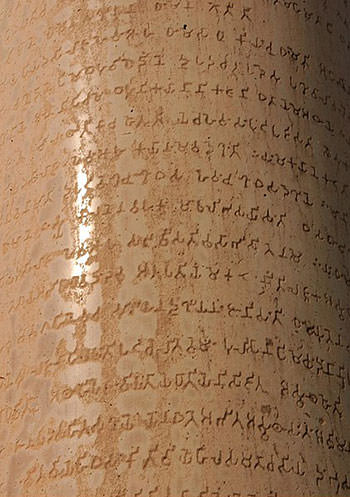
Ancient texts do not mention any other military activity of Ashoka. In his later reign the Emperor took to Dharma (Dhamma in Pali) and came to be known as Dhammashoka. His new policy of peace and non-violence in the realm of inter-state relation marked the beginning of an era of more than 40 years of relative peace, harmony and prosperity.
Main Sources:-
Lahiri, Nayanjot (2015). “Ashoka in Ancient India”. P105,135. Harvard University Press.
Sanyal, Sanjeev (Sep 13, 2016) “The truth about Ashoka”. Swarajyamag.com.
Guruge, Ananda W. P. (1995). “Emperor Aśoka and Buddhism: Unresolved Discrepancies between Buddhist Tradition & Aśokan Inscriptions”. In Anuradha Seneviratna (ed.). King Aśoka and Buddhism: Historical and Literary Studies.
#4 HE PLAYED A KEY ROLE IN SPREADING BUDDHISM
Among the most powerful Emperors in history, Ashoka played a vital role in helping spread the message of Gautama Buddha around the world. He not only incorporated principles of Buddhism in his ruling practices but promoted Buddhist expansion by sending monks to surrounding territories including Greece, Burma, Nepal, Tibet, central Asia, China and Japan. According to the Sri Lankan tradition, Moggaliputta-Tissa (Buddhist monk from Patliputra) who was patronized by Ashoka sent out nine Buddhist missions to spread Buddhism in the “border areas” around 250 BCE. The Rock Edict XIII states that Ashoka’s won a “dhamma victory” by sending messengers to five kings and several other kingdoms. Furthermore, he also sent his only daughter, Sanghamitra, and son, Mahindra, to spread Buddhism in Sri Lanka, where it is still a major religion
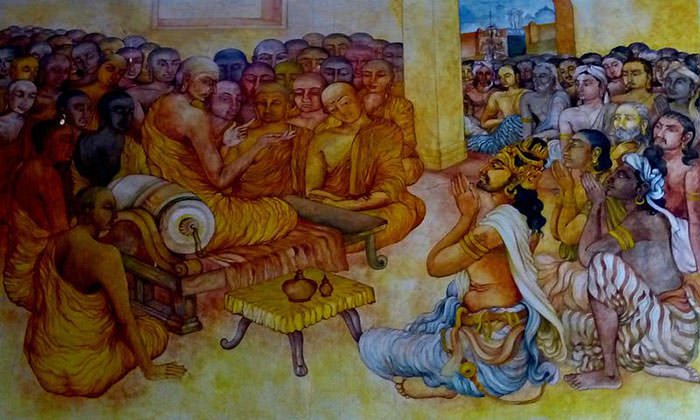
Ashoka’s support and sponsorship of the Buddhist way of life had far reaching consequences, that may be observed through the religious and spiritual histories of several countries, especially in Asia. With time traditional practices and philosophies of Buddhism became redefined and regionally distinct. In his efforts to propagate Buddhism, Ashoka also built several shrines and monasteries and inscribed Buddhist teachings on rocks and pillars in many places.
It may also be noted that keeping in line with the Dharmic family of religions (Indic origins), despite Ashoka’s vigorous exertions of faith, there is little evidence of him being prejudiced against any other. Ashoka’s edicts, such as the Rock Edicts 6, 7, and 12, emphasize tolerance of all sects. In his Rock Edict 12, Ashoka honors people of all faiths. In his inscriptions, Ashoka dedicates caves to non-Buddhist ascetics, and repeatedly states that both Brahmins and shramanas deserved respect. The Ashokavandana however does mention few instances of violence in his later reign including some against the Jains.
Main Sources:-
Gombrich, Richard (1995). “Aśoka – The Great Upāsaka”. In Anuradha Seneviratna (ed.). “King Aśoka and Buddhism: Historical and Literary Studies”. P10-11. Buddhist Publication Society.
Strong, John S. (1995). “Images of Aśoka: Some Indian and Sri Lankan Legends and their Development”. In Anuradha Seneviratna (ed.). King Aśoka and Buddhism: Historical and Literary Studies. Buddhist Publication Society.
#5 HE ADOPTED MANY WELFARE MEASURES FOR PEOPLE
As per various inscriptions of Ashoka, he devoted himself to the propagation of Dhamma, or following of the teachings of Gautama Buddha. He pursued the path of peace and non-violence, adopted a humanitarian approach towards governance & policy and introduced a large number of social welfare measures. These included establishment of medical treatment facilities for humans and animals and plantation of medicinal herbs (Rock Edict 2). The Mauryan Emperor ordered that the roads in the kingdom should be equipped with trees, wells and inns for the convenience of the passer-by and travelers (Pillar Edict 7). Death punishment was abolished (Pillar Edict 4) and the king encouraged obedience to parents, generosity toward priests and ascetics, and frugality in spending. Ashoka also instituted administrative positions like the dhamma-mahamattas, people who were made responsible for the welfare of the aged, the women and children, and various religious sects. They were also sent on diplomatic missions to the Hellenistic kingdoms of west Asia, in order to propagate the dhamma.
Main Sources:-
Strong, John S. (1989). “The Legend of King Aśoka: A Study and Translation of the Aśokāvadāna”. P3-4. Motilal Banarsidass.
Singh, Upinder (2012). “Governing the State and the Self: Political Philosophy and Practice in the Edicts of Aśoka”. p 131. South Asian Studies. University of Delhi.
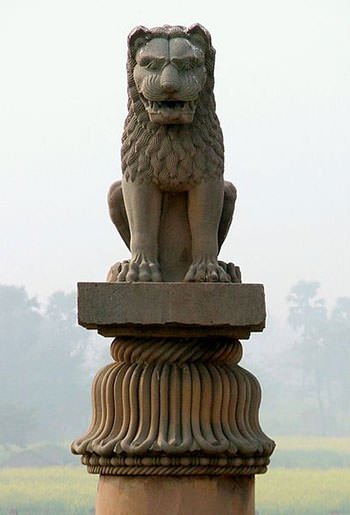
#6 ART AND ARCHITECTURE FLOURISHED DURING HIS REIGN
During the reign of Ashoka, art & architecture reached the highest level. Ashoka’s Pillars (Sthambhas) are the best surviving specimens of Mauryan Art. They were made out of single stones cut out from the grey Chunar. There are about 30 pillars installed at different places in the Indian subcontinent. Some of the more popular pillars exist at Rampurva, Lauriya, Nandangarh, Sarnath and Sanchi. Out of all the Mauryan Columns, the Sarnath Pillar (Lion Capital) is the most celebrated surviving monument of the Ashokan era. Carved with exquisite beauty, it has an inverted lotus with petals, and has the beautiful depiction of four Asiatic lions seated back to back. The lions are noted to symbolize power, courage, pride and confidence. The capital of one of the pillars erected by Ashoka features a carving of a spoked wheel, known as the Ashoka Chakra. This wheel represents the wheel of Dhamma set in motion by the Gautama Buddha. The period of Ashoka also witnessed the construction of 84,000 Buddhist stupas which were constructed all across the Indian subcontinent to celebrate the achievements of Gautama Buddha. Among the several Ashokan Stupas that survive today, the ones at Bharut and Sanchi hold immense popularity. The Great Sanchi Stupa, has also been declared as a World Heritage Site by UNECSO.
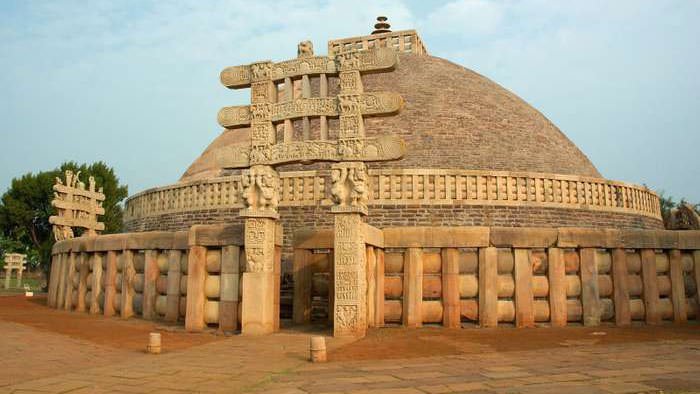
Apart from the Pillars & Stupas, the inscriptions of Ashoka hold valuable historical value as they are a very reliable source of the history of his reign. Ashokan Inscriptions located throughout the subcontinent fall under 3 Divisions: Rock Inscriptions, Pillar Inscriptions, and Cave Inscriptions. The edicts of Ashoka refer to a collection of 33 inscriptions on the Pillars of Ashoka. The inscriptions may be found from as far west as Afghanistan, and as far south as Andhra (Nellore District). Ashoka’s edicts state his policies and accomplishments. Most of Ashoka’s inscriptions are written in a mixture of various Prakrit dialects, in the Brahmi Script. However Ashoka’s inscriptions have also been found in Greek and the Aramaic language of the First Persian Empire. The most famous ones include the Kandahar Bilingual Rock Inscription, written in Greek and Aramaic, the Kandahar Greek Edict of Ashoka, the KAI 273 in Takshashila and the Laghmann I inscription; the later two being written in Aramaic.
Main Sources:-
Lahiri, Nayanjot (2015). “Ashoka in Ancient India”. P126. Harvard University Press.
Saranya, V. “Art and Architectural Grandeur under Emperor Ashoka the Great”. Journal of Advances and Scholarly Researches in Allied Education.
Singh, Upinder (2012). “Governing the State and the Self: Political Philosophy and Practice in the Edicts of Aśoka”. South Asian Studies. University of Delhi.
Saxena, Saurabh (Apr 17, 2014). “Edicts of Ashoka – Laghman Edicts”. Puratattva.in.
#7 ASHOKA WAS THE FIRST RULER TO ADVOCATE CONSERVATION MEASURES
Ashoka is recognized by many historians as the first ruler in known history to advocate conservation measures for wildlife. After his embrace of Buddhism, he implemented principles of “Ahimsa” or non-violence by relinquishing the royal hunting practices and animal sacrifices. He is known to have restricted the killing of animals in the royal kitchen (Rock Edict 1); the number of animals killed was limited to two peacocks and a deer daily, and in future, even these animals were not to be killed. Ashoka banned the killing of female goats, sheep and pigs that were nursing their young. Slaughter of young animals, fishes and birds was also prohibited. Apart from that, Ashoka went on further to established free veterinary hospitals and dispensaries in Pataliputra. An act unmatched by even the most progressive modern states today.
Main Sources:-
Gombrich, Richard (1995). “Aśoka – The Great Upāsaka”. In Anuradha Seneviratna (ed.). King Aśoka and Buddhism: Historical and Literary Studies. p 3. Buddhist Publication Society.
Dhammika, Ven. S. (1993 Translations) “The Edicts of King Asoka”. Buddhist Publication Society.
“Learn from Ashoka, it’s about animal welfare”. Economic Times.
#8 THE EMBLEM OF INDIA IS AN ADAPTATION OF THE LION CAPITAL OF ASHOKA
The National Emblem of the Modern Republic of India, is an adaptation of the Lion Capital of Ashoka. It was adopted on 26 January 1950, as the State Emblem of India on the first Republic day of the country. One of the finest examples of Mauryan Sculpture, the capital has four Asiatic lions seated back to back, which symbolize power, courage, pride and confidence. It mounted on a circular base. At the bottom, there is a horse and a bull, and at its centre is a Wheel (Dharma Chakra). The bull represents hard work and steadfastness, while the horse represents loyalty, speed and energy. The Emblem forms a part of the official letterhead of the Government of India and appears on all Indian currency and on Indian passports. The Ashoka Chakra taken from its base may also be seen at the center of the Indian National Flag. Also called the dharma chakra (wheel of duty), it contains 24 spokes which denote the 24 gunas (qualities) in a human being. The usage of the emblem is regulated and restricted under State Emblem of India (Prohibition of Improper Use) Act, 2005 under which, no individual or private organization is permitted to use the emblem for official correspondence.
Main Source:-
Singh, Hemant (Aug 14, 2020). “What is the meaning of 24 spokes of Ashok Chakra?”. Jagranjosh.com.
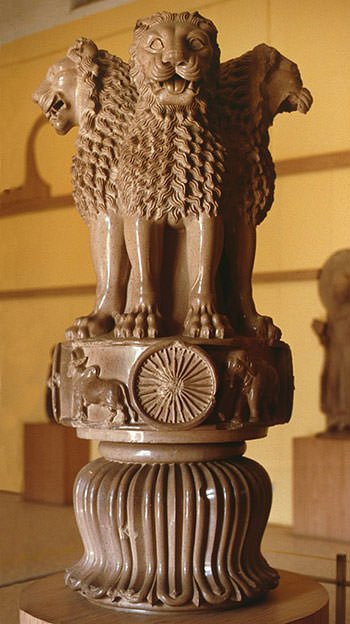
#9 HE SERVES AS AN INSPIRATION FOR HIS REMARKABLE TRANSFORMATION
Ashoka was among the most prominent kings of the ancient world but his name was lost for several centuries. The puranas (ancient literature from India) did mention him but left out any other details. In 1837, British scholar and orientalist James Prinsep deciphered the Brahmi script, thus beginning the rediscovery of Ashoka. Prinsep had originally identified the “Priyadasi” of the inscriptions he found with the King of Ceylon Devanampiya Tissa. However, in 1837, George Turnour discovered an important Sri Lankan manuscript (Dipavamsa, or “Island Chronicle”), associating Piyadasi with Ashoka. It is since then that Ashoka has come to be recognized as one of the most fascinating ancient monarchs. Ashoka’s transformation from a despotic, ambitious and cruel ruler to the Emperor who embraced Buddhism and actively pursued its non violent path is exemplary. His decision to renounce war, his insistence on religious tolerance and his peaceful efforts in establishing Buddhism as a major world religion remain relevant and continue to be appreciated by many. Owing to his unique place in history, as an inspiring monarch who combined successful kingship with idealism and philosophy, Ashoka has been a subject of popular culture in several artworks, books and films. Some notable mentions include:-
- A 1973 graphic novel published by Amar Chitra Katha, on the life of Ashoka
- “Ashok ki Chinta” (Ashoka’s anxiety), a poem composed by famous Hindi writer Jaishankar Prasad
- In 2002, American Folk-Pop Singer-Songwriter Mason Jennings released the song “Emperor Ashoka”, on the life of the monarch.
- Asoka, a fictional Indian Historical Drama Film was released in 2001, based on the early life of the Mauryan Emperor.
Main Sources:-
Allen, Charles (2012). “Ashoka: The Search for India’s Lost Emperor”. Hachette.
Mark, Joshua J, (Jun 24, 2020). “Ashoka the Great.” ancient.eu.
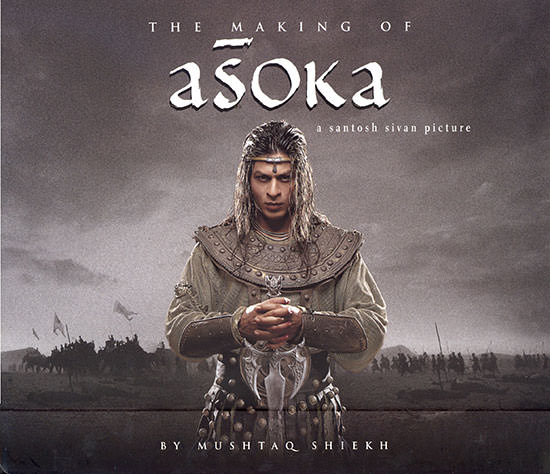
#10 HE SPONSORED THE CONSTRUCTION OF NUMEROUS INFRASTRUCTURE PROJECTS
Under the rule of Ashoka, there existed a separate administration/ department which was responsible for the revenue collection. Numerous Public Projects were funded, with proper budget allocation to enhance productivity. Construction of thousands of roads, waterways, canals, rest houses, hospitals, and other types of infrastructure took place. Due to such massive development, both domestic and international network expanded extensively, connecting key trading and political centers. Especially, international trade reached at a new level of prosperity, with Greek and Hellenic kingdoms as the trading partners. Trade also extended across South-East Asia. India’s exports included silk, textiles, spices and exotic foods.
Main Sources:-
Express Web Desk (Feb 1, 2018). “From the Mauryas to the British: Budget allocation, revenues and taxes in Indian history”. Indian Express.

